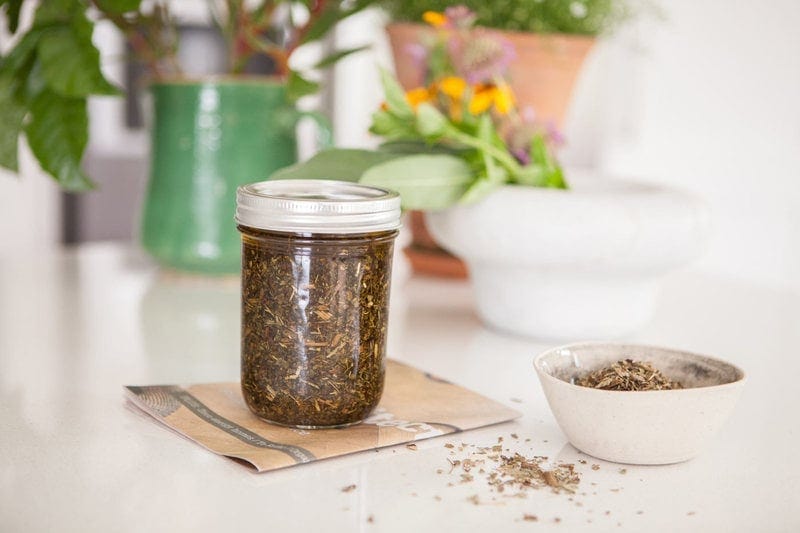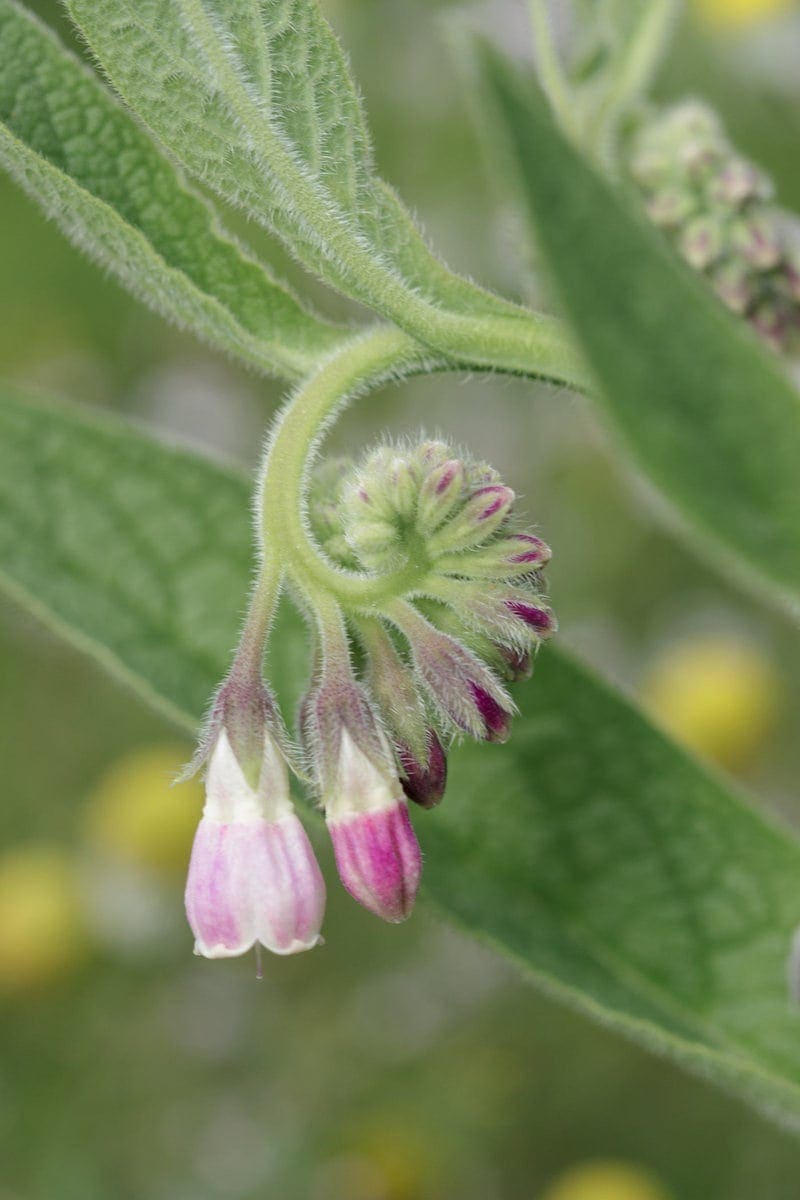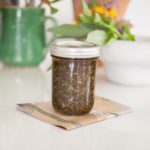

Some of the best remedies come from common weeds. I have a weed called Comfrey growing in my garden - she's actually quite a beautiful plant - large, soft fuzzy leaves, and purple flowers that curl into a spiral. Comfrey is also called knitbone or boneset - giving away one of its traditional therapeutic uses - helping broken bones to heal!
Comfrey is an amazing healer. It contains a chemical called allantoin which helps the body's cells to replicate and seal over wounds and scrapes. It is so effective at doing this, that you must be careful not to use it on deep wounds, otherwise the surface will heal up and the wound will still be open below. Comfrey should only be used externally as the plant chemicals it contains can be toxic to the liver [1].
Homemade Comfrey Ointment
Today I'm making a homemade comfrey ointment specifically for minor scrapes, bumps, bruises and sprains. I thought I would do it in two parts so that you can buy some herbs and make it with me. I think its really lovely being able to make your own natural remedies from scratch to keep in your home apothecary - especially if you are able to grow your own herbs to use in the preparations. It makes me feel so chilled and connected to nature doing this - it's a little bit magical don't you think?
Now, even though I have comfrey in the garden, it is still quite a young plant, so for this preparation I bought some dried comfrey leaf online and went from there. You can use both the leaf and root for this salve - the root has much stronger alkaloids in there.
[bctt tweet="Make your own Comfrey Ointment for minor scrapes, cuts, bumps and bruises. Recipe here!"]

Where to get the herbs
If you're in Australia, you can order dried comfrey leaf or root from Austral Herbs here.
If you're in New Zealand, you can place an order here from Cottage Hill Herbs in Wellington and receive a courier in a few days.
If you're in the U.S you can order from Mountain Rose Organics here.
If you are lucky enough to have your own growing, make sure you are able to correctly identify the plant before you harvest, then dry the leaves till there is no moisture left - if it isn't completely dry, you may find your oil ferments (making a comfrey infused oil is the first step in making the ointment).
Finally, to keep this simple, I've only used the one herb in this infusion, but two others that will go particularly well as a salve to heal minor bumps, scratches and wounds are Calendula (Calendula officinalis) and Plantain (Plantago major). Plantain is common and grows all over the world - earning the nickname 'white man's footsteps' as it spread so rapidly. Both plantain and comfrey are also really good at drawing out splinters - my Dad recently got a large, deep splinter in his finger, that we just couldn't pick out. He was going to go to the doctors to get it removed, it was that deep. I picked a comfrey leaf from the garden and made it into a simple poultice - I tore it up and gave it a bit of a grind in the mortar and pestle till the juices were flowing, then popped it over the splinter and covered it with a bandaid.
We changed the poultice a couple of times but eventually it softened the skin and drew out the splinter. Clever little plant!

Comfrey Infused Oil
Ingredients
- 1 500ml glass jar with an airtight lid
- Dried comfrey leaf and/or root enough to pack the jar with (I think I used close to 50g)
- Extra Virgin Olive Oil you could also use almond, or coconut - liquify the coconut oil first, enough to fill the jar (I think I used just under 2 cups)
Instructions
- Pack your dried herb into the glass jar, filling it right to the top.
- Pour your oil over the top, again, right to the very, very top.
- Tap the jar on a hard surface lightly - this is just to remove any air bubbles, then screw the lid on tight.
- Clearly label the jar with the herb and date, then place in a cool dark place for 6 weeks to let it infuse.
- Every couple of days or even once a week, give the jar a good shake up to make sure the oil is getting through to all of the dried herb.
- After six weeks, strain herbs through a fine mesh bag, collecting the infused oil. Press the mixture in your hands well to expel every last drop. When you're done, compost the herbs and store the oil in a glass jar.
- There is a second, shorter method for infusion, but I'll cover that off with Part 2 of this post. So if you'd like to follow along, order some herbs and prepare your infusion, and see you in six weeks!
Part 2 Update:
Homemade Comfrey Ointment for Bruises, Bumps and Scrapes, Part 2
L.
1. Bone, K., & Mills, S. (2013). Principles and Practices of Phytotherapy (2nd ed.). China: Elsevier.

I’d love you to follow me on Instagram,
tag me @ascensionkitchen so I can see your creations!





Hilary Stott
Just got my herbs and ready to infuse:)
Maritza Pedraza
Very interesting and valuable. At least to know or suggest to someone who can have access to this plant. tks
Alicia Hansen
Love this! Thank you. It will definitely come in handy at my house xx